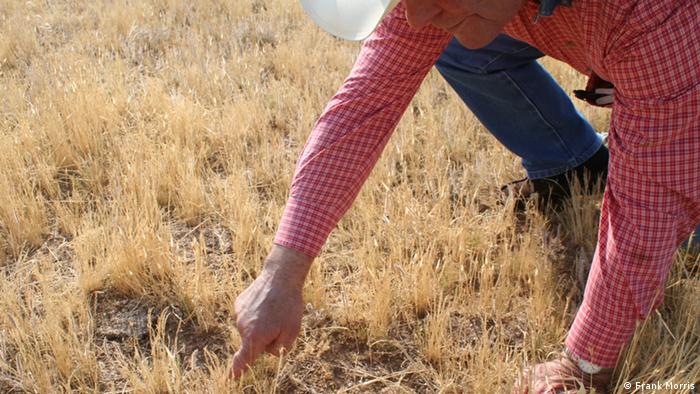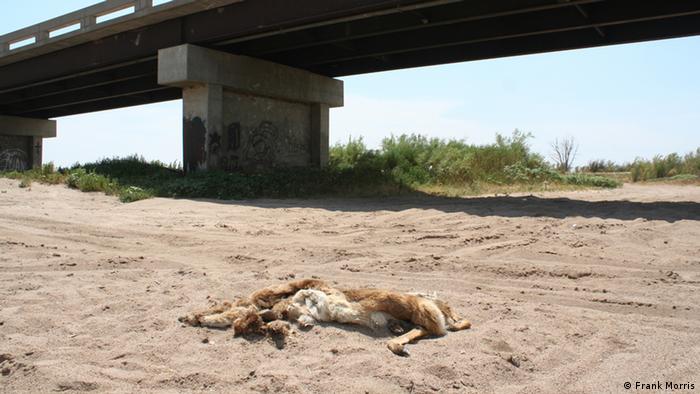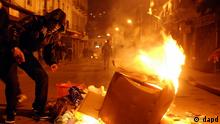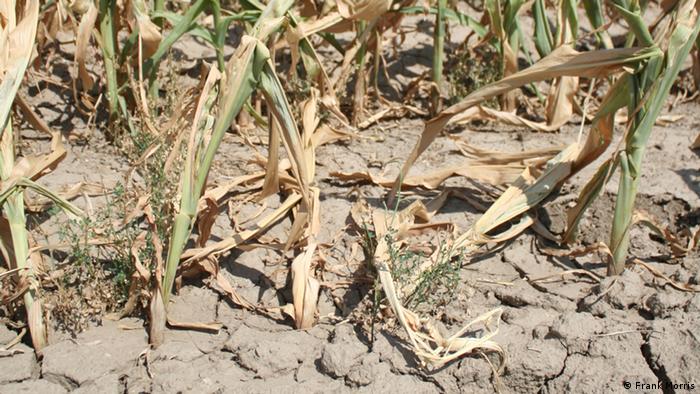Concern is growing that the drought ravaging US cornfields may trigger a global food crisis similar to the one in 2008. But David Hallam of the UN's Food and Agricultural Organization says we have learned how to survive.
DW: Mr. Hallam, what impact will the continuing drought in the midwestern United States
David Hallam: The US is suffering its worst drought in 50 years. The impact has been devastating. Maize crop will be down 12 percent, so quite a significant reduction. The US

David Hallam is the director of the FAO's trade and markets division
In 2008 there were food shortages around the world during the global food crisis. This triggered violent clashes, political instability and had huge consequences for the global community. Are we facing a similar situation here?
There were particular combinations of circumstances in 2007-8, when people talked about a world food crisis. There were high levels of demand for food products, oil prices were at high levels, stocks were low. What we have at the moment is a situation where we've got problems with maize prices which have driven up wheat prices as well. But the overall stock levels are not so bad. Rice, which is probably the most important crop in terms of international food security, production and availability is good. We're expecting some good harvests and as we have seen rice prices have not moved at all.

The US government slashed its forecast for drought-hit corn production causing global prices to spike 20 percent
What happens when food security is compromised?
When there is some kind of food price shock – now, I am not talking about extreme famine conditions due to natural disasters, I'm talking just about food price shocks – some households simply reduce the volume of food they consume. Others substitute, they switch to cheaper foods, often locally grown, cheaper foods. Others try to maintain their food intake by cutting back on other expenditures like heath care and education. Those kinds of adjustments tend to be greater in poor, urban households, households that are more integrated into markets where international price developments transmit to the price of foods that they buy.
But it doesn't sound like you expect the droughts to trigger social instability.
When you look at [the global food crisis] in 2007-8, there were other reasons besides rising international food prices which triggered instability. In certain countries, poor households were spending up to 75 percent of their income on food. When food prices start to rise, this is a critical situation for them and sometimes you get the kind of reactions that you saw in 2007-8.

Locals say the current drought in the US is worse than the Dust Bowl in the 1930s
Five years ago, US United States
The maize crop in the US

In 2008, the global food crisis triggered unrest around the world
What the international organizations recommended to the G20 was that biofuel policies, which distort the market by influencing supply and demand, should be discontinued. If that was not possible, then they should at least be made more flexible. So that if, as now, there is a shortfall in production and as a result prices are going higher, then the mandates should be adjusted downwards.
Corn doesn't only grow in the United States
The US US
So, at this point, what are the recommendations of the FAO, as we brace for the impacts of the US
Fortunately, a number of lessons were learned out of the experience of the global food crisis in 2007-8. Individual countries are better prepared to protect the most vulnerable groups from rapidly rising food prices. Things like food for school, food for work, targeted subsidies. There is also a need for countries to build their resilience. A lot of the adverse impacts that developing nations suffered during the last food crisis were because their own domestic agricultural production was in a bad state after years of neglect and a lack of investment.
It's important for countries to build resilience of their domestic agriculture so that they are less reliant and less exposed to what is going on in world markets.
David Hallam is the director of the trade and markets division of the Food and Agriculture Organization of the United Nations.

Comments